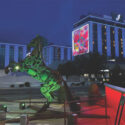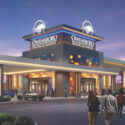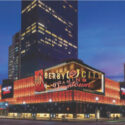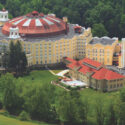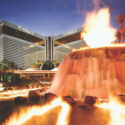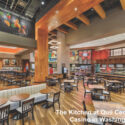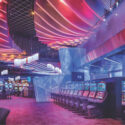
One of the often unsung benefits of gaming is its support of historic places. This can be seen in the Colorado mountain towns that offer casinos, Hot Springs, Arkansas, where the national park benefits from gaming at Hot Springs’ Oaklawn racetrack, the Greenbriar Resort in West Virginia, and on many Indian reservations across the country where gaming keeps the historic culture of tribes alive.
In Indiana, where riverboats opened in 1993, a carveout was made for the French Lick resorts, in a historic spa town that had been down on its luck for several years. A casino would help bring the town back and restore the two historic hotels to their former glory.
The hotels were closed and renovated while the property was built. The casino didn’t open until 2006—a barge floating on a pond to honor the riverboat regulations—but it’s done its job. French Lick is again one of the premier resort destinations in Indiana.
The first hotel at French Lick was built in 1845 by William A. Bowles, around the sulphur mineral springs that were prevalent in that area. Subsequent owners expanded the hotel, but it burned to the ground in 1897, only to rise again. Under the ownership of Tommy Taggart, the former mayor of Indianapolis and chairman of the Democratic National Committee, French Lick attracted a wide variety of prosperous visitors and became known as a sports center, especially famous for golf. Today, there are three championship 18-hole courses at the resort—the Hill Course was designed in the early 20th century by noted golf course architect Donald Ross, with the most recent course designed by another legendary golf course architect, Indiana native Pete Dye.
At the same time, however, French Lick became known for illegal gambling, with secret tunnels connecting the gaming rooms to the hotels. It’s rumored that Al Capone frequented those dens of iniquity. At the height of its popularity during Prohibition, there were 30 hotels in the French Lick region and 13 illegal casinos. Famous guests who visited French Lick included Franklin D. Roosevelt, Harry S. Truman, Adlai Stevenson, the Marx Brothers, Joe Louis, Bob Hope, Bing Crosby, Douglas MacArthur, Bud Abbott and Lou Costello.
The Sheraton Corp. bought the French Lick Springs Resort in the 1950s, hoping to create an all-inclusive resort. The hotel sponsored jazz and music festivals featuring Duke Ellington and Arthur Fiedler conducting the Boston Pops, but the resort never reached the popularity envisioned by Sheraton, and was sold in the early 1990s to Luther James and his family. James began to renovate the entire resort, then sold it to Bill and Gayle Cook, who continue the restoration to this day.
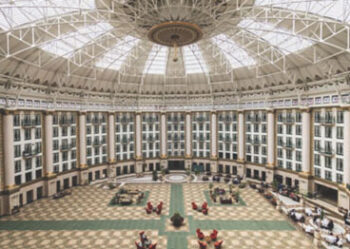 The 84,000-square-foot casino features 1,200 slot machines and dozens of blackjack, roulette, craps and poker tables. The resort has 443 rooms and suites, eight restaurants, a six-lane bowling alley, indoor tennis, riding stables, promenade shops and of course, the golf courses.
The 84,000-square-foot casino features 1,200 slot machines and dozens of blackjack, roulette, craps and poker tables. The resort has 443 rooms and suites, eight restaurants, a six-lane bowling alley, indoor tennis, riding stables, promenade shops and of course, the golf courses.
The West Baden Springs Hotel has an equally quirky history. The original resort was destroyed by fire in two hours in June 1901. A new hotel was designed by architect Harrison Albright of West Virginia, who completed the structure in one year. The property was completed with a 200-foot-diameter atrium, which until the advent of domed sports arenas was the largest freestanding dome in the world, and a fireplace that burned 14-foot logs. It opened for business in June 1902.
Horticulture plays an important roll in both resorts, and includes a Japanese garden, a fresh water garden and an Italian-style formal garden. The most enduring of these locations is the traditional Japanese garden, which includes a representation of a peaceful landscape, punctuated with a tranquil water feature. This eclectic element rendered the garden a perfect setting for outdoor cocktail hours, receptions or weddings.
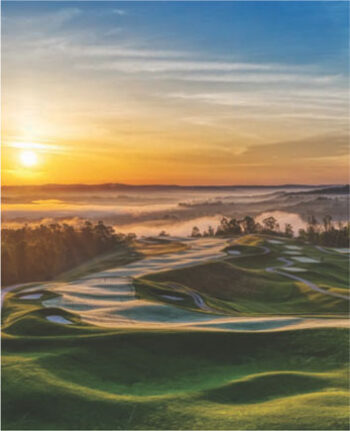 So thanks to gaming, the French Lick resorts are poised to enchant visitors for another 100 years or more.
So thanks to gaming, the French Lick resorts are poised to enchant visitors for another 100 years or more.





